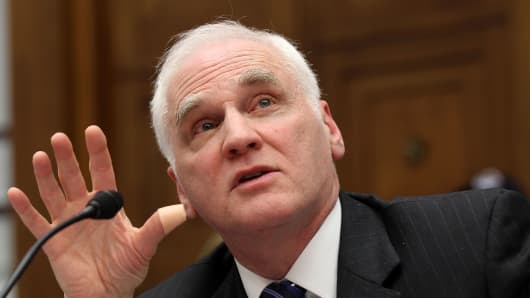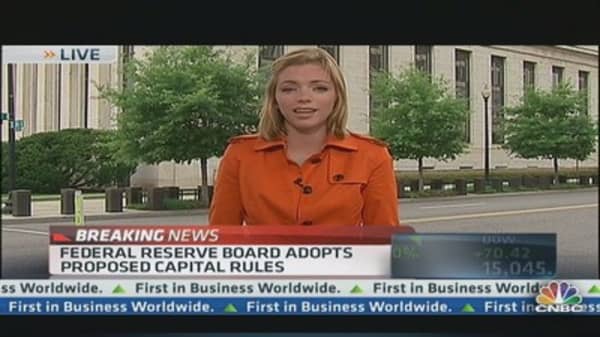The Federal Reserve Board has ratcheted up the amount of capital U.S. banks will need to hold. In the new rules approved by a vote in an open meeting today in Washington, the minimum capital U.S. banks will need to hold is higher than that set out in Basel III. Most banks are already in compliance with the rule, according to the Fed. Still, about 100 banks will end up raising $4.5 billion by 2019 to catch up to the rules.
Chairman Ben Bernanke complimented Fed staff for their work on the rule, which synthesized the positions of various agencies as well comments from the financial services industry. The Fed struck a "delicate balance" when it came to the needs of small banks, according to Bernanke, and he noted that between the stress test, capital reviews, and the new rules, regulation of large banks was coming together. He went on to say Fed examiners would have to keep a close eye on risk management.
The key elements of the new rule are the same for all banks, regardless of size. They include a new ratio—Tier 1 Common/risk weighted assets of 4.5 percent also known as the capital conservation buffer. (This would be 2.5 percent higher for the big internationally-active banks.) In addition, banks will have to have Tier 1 Capital of 6 percent of assets, vs. 4 percent under Basel III rules. They will have to keep total capital of 8 percent against risk-weighted assets, which is unchanged from the current Basel III rules.
One piece of the rules that has had banks and the markets worried is the leverage ratio, the amount banks can borrow to fund their activities, which can have a big impact on how much banks lend. There was talk the Fed would impose a higher leverage ratio than Basel III. Instead, the Fed stuck with a leverage ratio of 4 percent common equity to assets. Big banks would have to add a 3 percent cushion to that, with off balance sheet items being added to assets. This is the same treatment that Basel III proposed.
But there could be stiffer leverage requirements coming down the pike. In his opening remarks, Governor Dan Tarullo said: "We are close to the completion of a notice of proposed rulemaking that will establish a leverage ratio threshold for these firms [the 8 biggest banks] above the Basel III required minimum." In addition, the Fed is working on additional capital rules for institutions that rely too heavily on short term public debt. In a few months' time the Fed should have new liquidity rules governing how much equity and long term debt banks should have.




